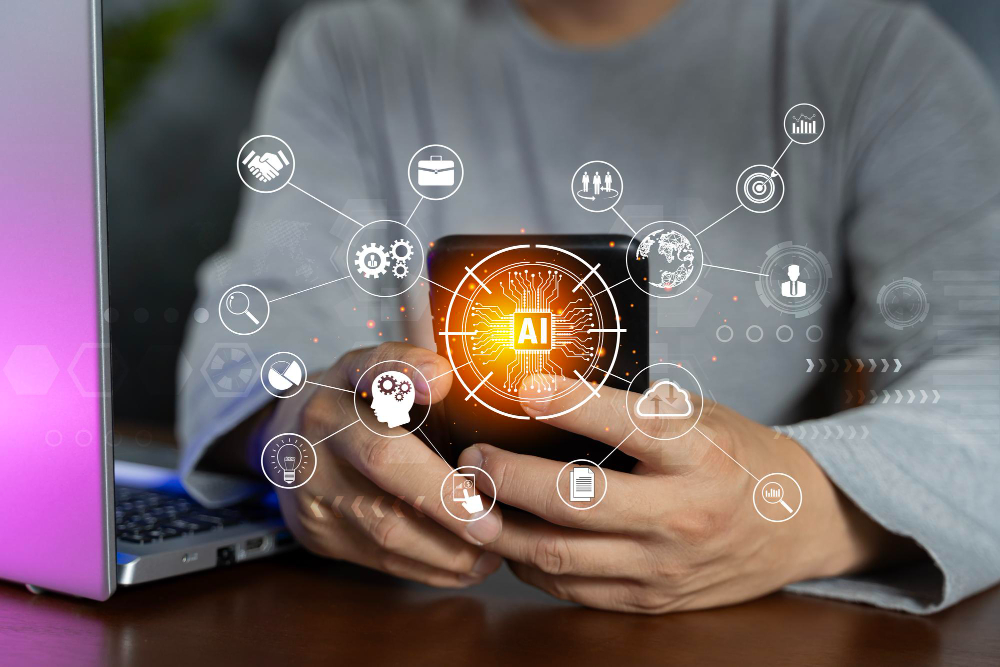Multimodal AI Advancements
AI-Augmented Multimodal AI Advancements: The Fusion of Intelligence and Sensory Reality
In the ever-evolving field of artificial intelligence, we are entering a new frontier where AI is no longer confined to a single mode of input or output. The latest leap—AI-Augmented Multimodal AI—combines the perceptual richness of multimodal models with the reasoning and autonomy of AI augmentation. This fusion is shaping the next era of intelligent systems that can see, hear, speak, understand, and act in real time, across multiple contexts and platforms.
🔍 What Is AI-Augmented Multimodal AI?
At its core, multimodal AI refers to systems that can process and interpret information from multiple input types—such as text, images, audio, and video—simultaneously. Think of models like OpenAI’s GPT-4o, Google’s Gemini 1.5, or Meta’s Chameleon, which merge various data streams to respond in natural, human-like ways.
AI augmentation takes this a step further by enhancing these models with capabilities such as:
Real-time decision-making
Contextual memory
Personalization and adaptation
Embodied action (for use in robotics or autonomous systems)
The result is AI-augmented multimodal systems—models that don’t just understand across modes, but actively enhance, extend, and enrich their own reasoning and functionality.
🚀 Key Advancements in AI-Augmented Multimodal AI (2024–2025)
1. Unified Omnimodal Foundation Models
Models like GPT-4o and Gemini 1.5 Pro combine text, vision, and audio into a single, highly optimized transformer backbone. Unlike older “multi-headed” architectures, these models interpret multiple modalities simultaneously—blending voice tone, facial expression, and linguistic content to generate nuanced, emotionally aware responses.
Augmented Edge: Integration with memory layers and dynamic context tracking enables these models to adjust tone, formality, and interaction style in real time.
2. Cross-Modal Reasoning and Generation
Multimodal models are increasingly capable of cross-modal generation:
Generating video from text (e.g., OpenAI’s Sora, Google’s Veo)
Converting audio descriptions into images or vice versa
Creating narrated 3D environments using a combination of speech, vision, and spatial data
Augmented Edge: Systems now include recursive self-refinement loops, allowing them to verify or enhance outputs across modes (e.g., checking that a video aligns with a script).
3. Embodied and Sensorimotor AI
Companies like Google DeepMind and NVIDIA are advancing vision-language-action (VLA) agents that combine perception and motion. Models such as RT-2, GR00T, and Gemini Robotics power robots capable of folding laundry or navigating homes by processing language, vision, and proprioception.
Augmented Edge: These agents use reinforcement learning + multimodal prompts, creating adaptive behaviors based on continual learning, not static pretraining alone.
4. Edge-Optimized Multimodal Intelligence
A major leap in 2025 is the rise of on-device multimodal AI, especially with models like Google’s Gemma 3n, which supports multimodal inference on devices with just 2GB of RAM.
Augmented Edge: These models use distillation and quantization techniques, coupled with cloud augmentation fallback—enabling fast, secure, and private AI applications on smartphones, wearables, and IoT systems.
5. Domain-Specific and Explainable Multimodal AI
Healthcare, legal, and enterprise domains now rely on AI-augmented multimodal models to interpret combinations of:
- Medical scans
- Patient histories
- Doctor-patient conversations
Example: LLaVa-Med and BioGPT-Multi outperform unimodal models in diagnosis, report generation, and treatment prediction by integrating diverse clinical data.
Augmented Edge: With attention heatmaps, causal tracing, and natural language rationales, these models offer not just decisions—but explanations.
🌐 Real-World Applications
| Domain | Application | Multimodal Enhancement | AI-Augmentation |
|---|---|---|---|
| Education | Interactive tutors | Text + speech + handwriting | Adaptive lesson planning |
| Retail | Smart shopping assistants | Voice + camera + location | Personalized recommendations |
| Healthcare | Diagnostic tools | Imaging + notes + vitals | Predictive analytics |
| Security | Surveillance analytics | Video + audio + motion | Threat prediction |
| Creativity | Filmmaking, music, design | Text-to-video, music generation | Stylistic adaptation |
🔮 The Road Ahead: What’s Next?
📎 Memory-Driven Multimodal Context
The next-gen models will include persistent multimodal memory, letting them recall past conversations, visuals, and interactions to enhance continuity and personalization.
🎭 Emotion-Aware AI Companions
With refined audio and visual cues, augmented multimodal AI is becoming more emotionally aware—reacting to facial expressions, tone shifts, and body language in real time.
🧠 Self-Evolving Embodied Intelligence
Agents that train themselves via real-world interaction (rather than pretraining alone) will begin to mirror human-like general intelligence across sensory tasks.
🛡️ Ethical Considerations
As these systems gain autonomy and sensory awareness, we must focus on:
- Bias mitigation across modalities
- Data privacy, especially in visual/audio capture
- Explainability and accountability, particularly in life-critical domains like healthcare and law
✍️ Final Thoughts
AI-Augmented Multimodal AI isn’t just a technological milestone—it’s a paradigm shift in how machines interact with the world. These systems no longer merely respond to inputs—they perceive, understand, generate, and evolve in real-time, multi-sensory environments.
As we move forward, the true challenge will not be building smarter systems—it will be designing ones that are responsible, trustworthy, and beneficial to all.





